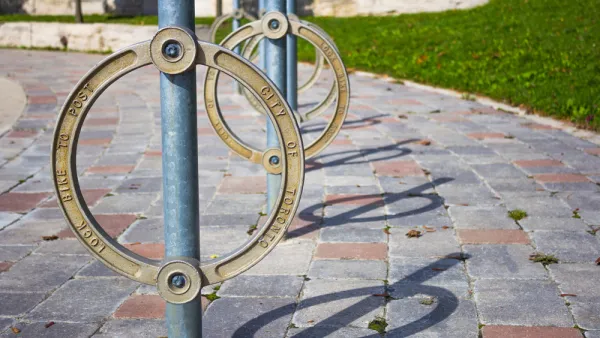Business owners are usually skeptical when planners start talking about removing parking to make space for bike lanes, but study after study has shown bike lanes are good for business. The latest example from Toronto is now exception.

Eric Jaffe shares news of a new study that analyzes data from the city of Toronto to produce findings that are in keeping with previous studies: bike lanes are good for business.
A group of researchers from the University of Toronto and the Center for Active Transportation conducted surveys of merchants and visitors before and after the installation of a bile lane along a 1.5-mile stretch of Bloor Street that raised local concerns when first proposed.
After requesting information about spending, customer counts, visit frequency, and vacancies, the survey's findings present "good news across the board," according to Jaffe. Monthly spending rose, the number of customers rose, the frequency of visits rose, and vacancies held steady.
After detailing the findings and also providing a few caveats, Jaffe notes the unanswered questions about the effect of bike infrastructure on business:
Just why bike lanes have a neutral-to-positive impact on spending remains an open question. The strongest theory — one supported by the Bloor study — is that while cyclists lacking a car trunk might not make large purchases, they make more total purchases over a given period, since an area is now easier and safer for them to visit.
FULL STORY: The latest evidence that bike lanes are good for business

National Parks Layoffs Will Cause Communities to Lose Billions
Thousands of essential park workers were laid off this week, just before the busy spring break season.

Retro-silient?: America’s First “Eco-burb,” The Woodlands Turns 50
A master-planned community north of Houston offers lessons on green infrastructure and resilient design, but falls short of its founder’s lofty affordability and walkability goals.

Delivering for America Plan Will Downgrade Mail Service in at Least 49.5 Percent of Zip Codes
Republican and Democrat lawmakers criticize the plan for its disproportionate negative impact on rural communities.

Test News Post 1
This is a summary

Test News Headline 46
Test for the image on the front page.

Balancing Bombs and Butterflies: How the National Guard Protects a Rare Species
The National Guard at Fort Indiantown Gap uses GIS technology and land management strategies to balance military training with conservation efforts, ensuring the survival of the rare eastern regal fritillary butterfly.
Urban Design for Planners 1: Software Tools
This six-course series explores essential urban design concepts using open source software and equips planners with the tools they need to participate fully in the urban design process.
Planning for Universal Design
Learn the tools for implementing Universal Design in planning regulations.
EMC Planning Group, Inc.
Planetizen
Planetizen
Mpact (formerly Rail~Volution)
Great Falls Development Authority, Inc.
HUDs Office of Policy Development and Research
NYU Wagner Graduate School of Public Service





























